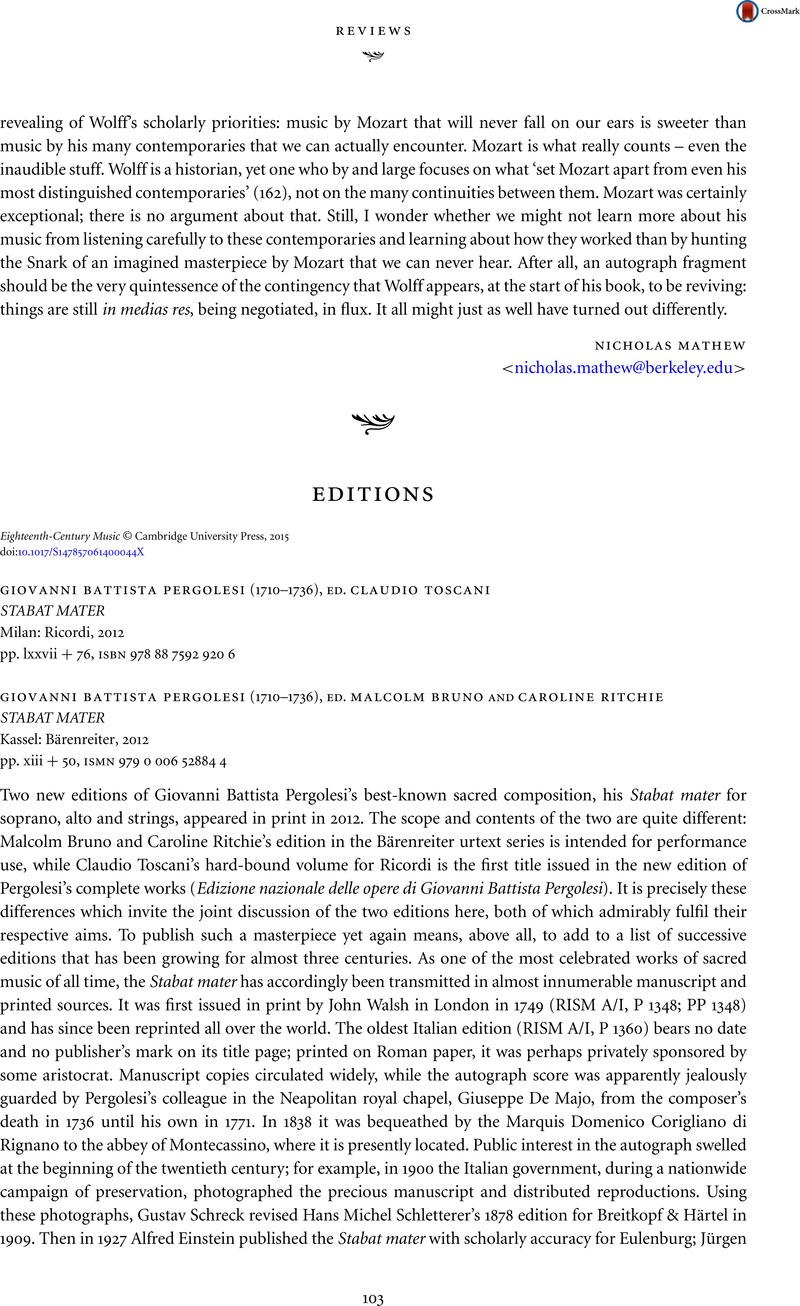No CrossRef data available.
Article contents
GIOVANNI BATTISTA PERGOLESI (1710–1736), ED.CLAUDIO TOSCANI STABAT MATERMilan: Ricordi, 2012 pp. lxxvii + 76, isbn978 88 7592 920 6 - GIOVANNI BATTISTA PERGOLESI (1710–1736), ED.MALCOLM BRUNO ANDCAROLINE RITCHIE STABAT MATERKassel: Bärenreiter, 2012 pp. xiii + 50, ismn979 0 006 52884 4
Published online by Cambridge University Press: 17 February 2015
Abstract
An abstract is not available for this content so a preview has been provided. Please use the Get access link above for information on how to access this content.

- Type
- Reviews: Editions
- Information
- Copyright
- Copyright © Cambridge University Press 2015




